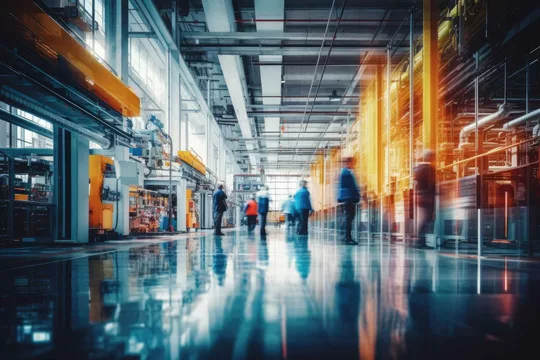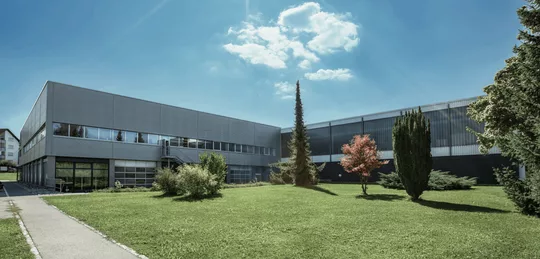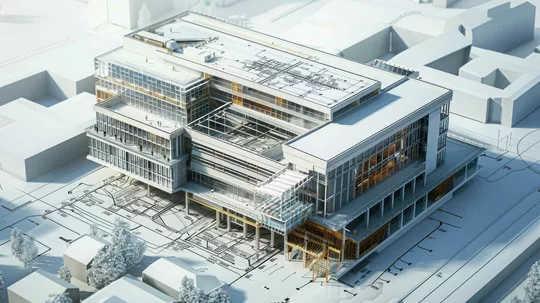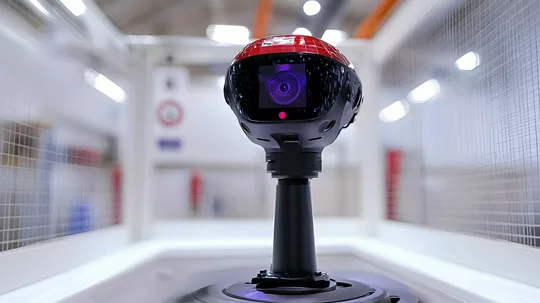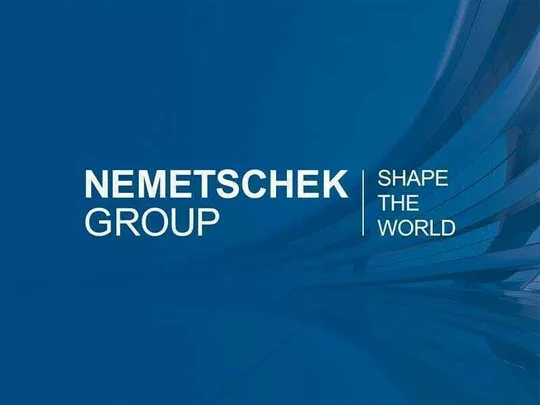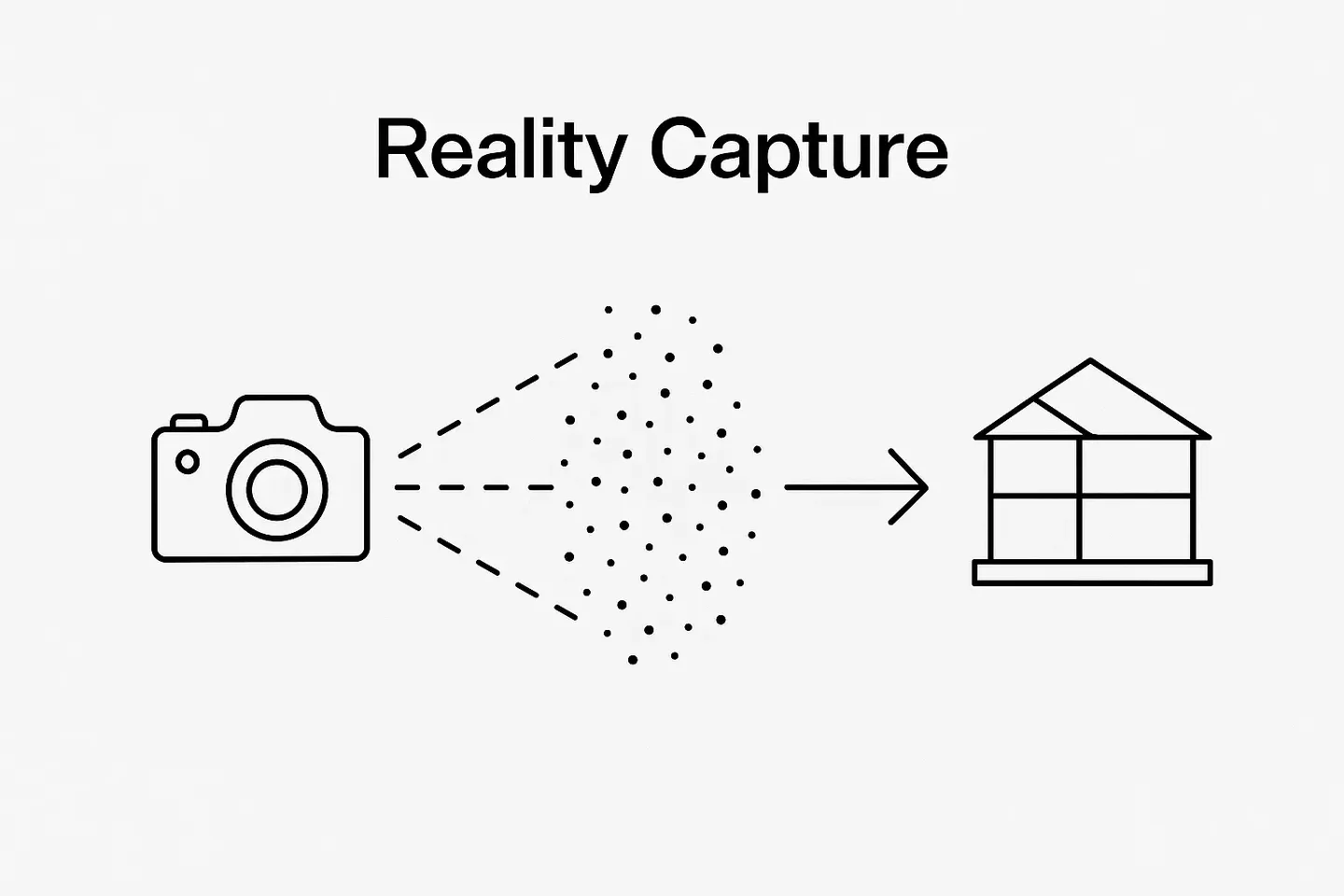How the Nemetschek Haus was given a digital twin
The Nemetschek Haus in Munich became the pilot project for our dTwin platform – and a model case for the digital transformation of existing buildings.
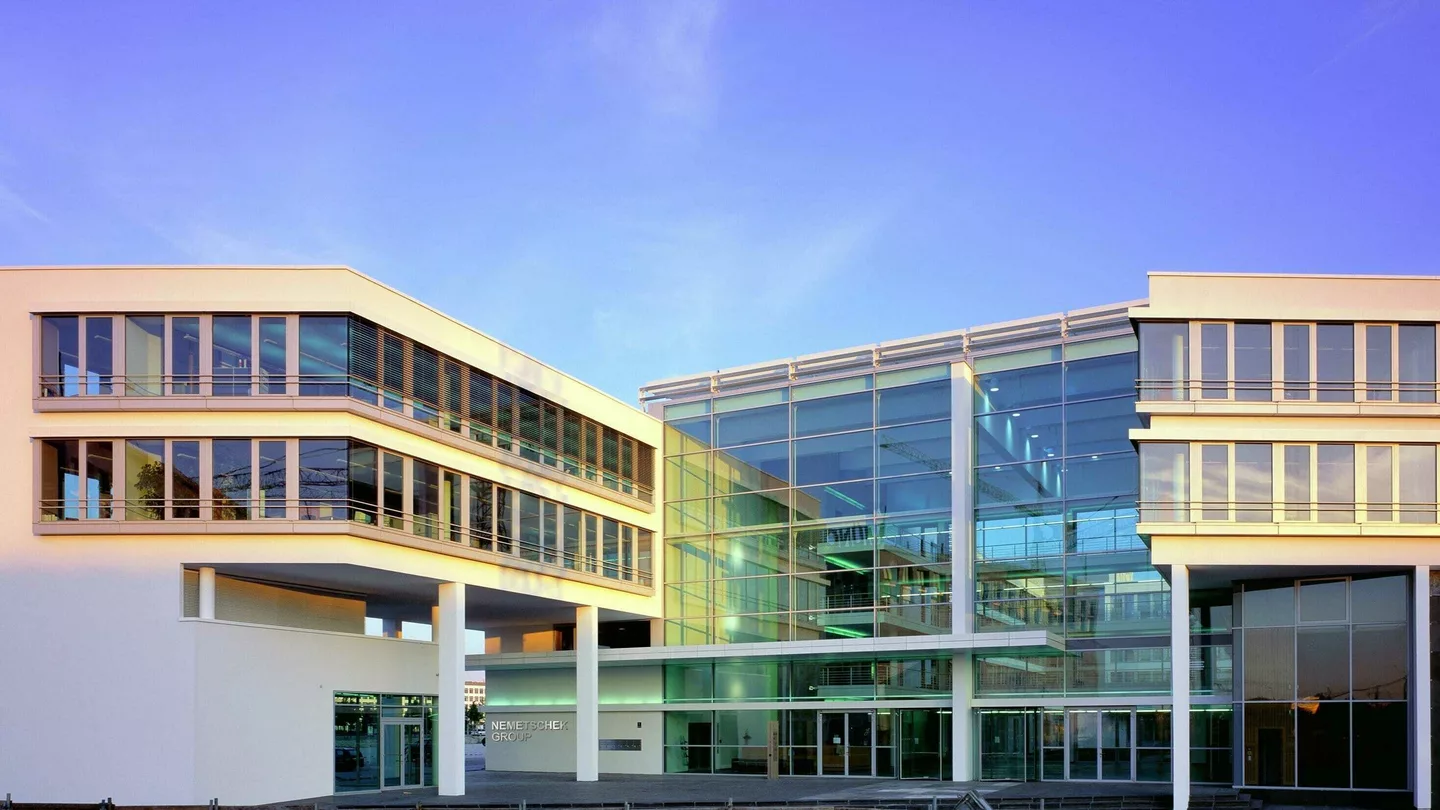
What is the Nemetschek Haus?
The Nemetschek Haus is the headquarters of the Nemetschek Group, located in Konrad-Zuse-Platz 1, 81829 Munich, Germany. Built in 2000, the office complex spans over 30,000 m² and houses both Nemetschek brands and external tenants. Due to multiple renovations and conversions over the years, it presented an ideal test case for creating a digital twin of an existing building.
Why the Nemetschek Haus needed a digital twin
While data for new buildings is typically available in structured BIM models, existing buildings like the Nemetschek Haus often suffer from a fragmented and outdated data landscape. Floor plans, technical drawings, and documents are stored in silos – if they exist at all.
To overcome this challenge, we developed dTwin – a cloud-based SaaS platform for Building Lifecycle Intelligence. Our headquarters served as the first real-world application of this solution.
Finding and integrating building data
To digitally replicate the Nemetschek Haus, a variety of data sources were collected and consolidated:
- BIM models from previous renovations
- 2D drawings and construction sketches
- Laser scans and 360° panoramic images
- IoT sensor data (temperature, humidity, CO₂, etc.)
Together with our partner BIMm Services, we used terrestrial laser scanning and mobile devices to capture 13,000 images and more than 100 GB of point cloud data. These were cross-referenced with legacy data to create a comprehensive and up-to-date digital twin of the building.
The digital twin in action: Smart building operations
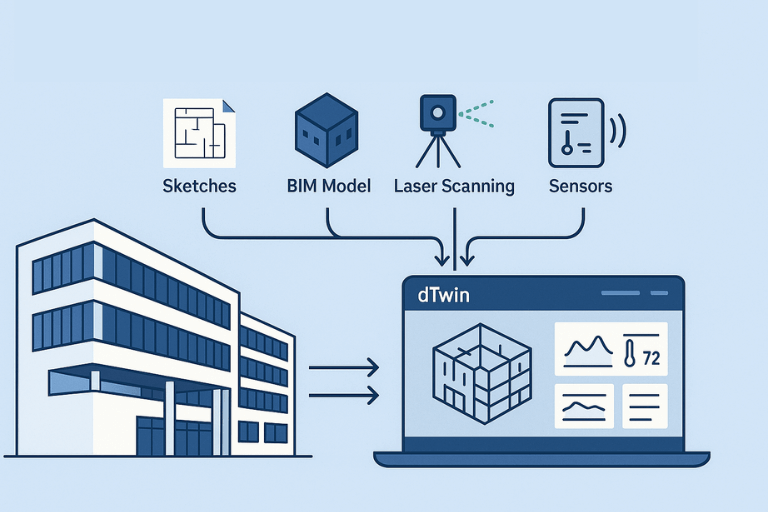
The dTwin platform offers more than just 3D visualizations:
- Switch between 3D point cloud, 360° images, and BIM models
- Real-time data integration for every room and asset
- Object library with search and export features
- Heatmaps to detect faulty equipment
- Custom alerts via email or SMS
- Urban context using 3D geodata from Google
Facility managers and operators can access critical insights remotely and make data-driven decisions – for everyday operations, energy optimization, or future renovations.
dTwin: Bridging planning, construction, and operations
dTwin serves as a single source of truth throughout the building lifecycle:
- During planning: All stakeholders access a shared data environment
- During construction: New information is continuously added
- During operation: The building remains digitally transparent and updatable
By implementing dTwin, the Nemetschek Haus becomes a best-practice example for the digital future of buildings – especially in the renovation and retrofit sector.
Conclusion: The Nemetschek Haus proves what’s possible
The digitization of the Nemetschek Haus demonstrates how even complex existing buildings can benefit from modern technology. With dTwin, building data becomes actionable intelligence across departments, use cases, and time.
The result: greater efficiency, smarter decisions, and sustainable building operations – powered by a digital twin.
FAQ: Nemetschek Haus
Where is the Nemetschek Haus located?
In Munich, Germany – specifically Konrad-Zuse-Platz 1, Germany
Who uses the Nemetschek Haus?
It hosts the Nemetschek Group, brands like Allplan and Bluebeam, and external tenants.
Why was a digital twin created for the building?
To test and validate our dTwin platform under real-world conditions.
What makes dTwin unique?
It centralizes data from BIM, CAD, IoT, and facility systems into one intuitive platform.




